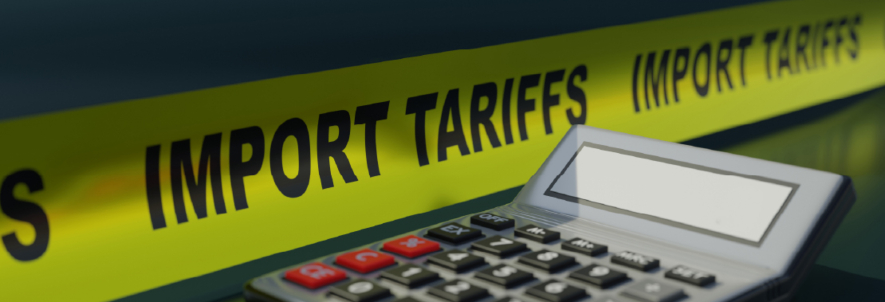
Tariff Changes Threaten Worker Safety — and U.S. Industry
On April 2, 2025, new tariffs took effect that could deeply jeopardize the safety of millions of American workers. The International Safety Equipment Association (ISEA) has raised alarm bells: the added import costs hit personal protective equipment (PPE), safety gear, and components—products vital for safeguarding workers across sectors from floods to factories.
In essence, what might seem like a trade policy move could translate into fewer hard hats, higher-cost gloves, delayed respirator deliveries—and ultimately greater risk on the job.
Why PPE Should Be Exempted from Tariffs
The Workforce That Depends on PPE
Over 125 million U.S. workers rely daily on protective equipment to do their jobs somewhere between streets, warehouses, manufacturing floors, construction sites, and first-responder settings. PPE is not optional—it’s a frontline line of defense against hazards.
Yet, much of America’s PPE supply chain is global. Some protective gear is manufactured abroad; in other cases, U.S. producers depend on globally shipped raw materials or components. When tariffs drive up costs or disrupt logistics, PPE supply suffers.
Rising Costs, Supply Disruptions, and Risk
With the new tariffs, the cost of lifesaving safety gear is at risk of spiking. Disruptions in shipment schedules, component bottlenecks, and price surges could all make PPE harder to get—exactly when demand is nonnegotiable.
For industries that already operate on thin margins—construction, manufacturing, distribution, food processing—such cost pressures are more than financial pain. They may force companies to cut back elsewhere, delay orders, or accept longer lead times. That leads back to workers potentially being left without adequate protection.
Moreover, existing domestic production lacks the scale to replace global supply instantly. It would take years for U.S. manufacturers to ramp up capacity to fully meet demand. And even domestic PPE companies may pass along increased component costs (resulting from tariffs) to buyers, squeezing budgets further.
Why This Matters to Employers, Safety Leaders, and Policy
Economic Competitiveness Meets Worker Protection
ISEA’s leadership frames PPE not merely as a safety expense, but as an integral part of national infrastructure: neglecting it weakens American productivity, worker health, and competitiveness. They argue that tariffs on safety gear amount to penalizing the very tools that keep the workforce going.
Cam Mackey, CEO of ISEA, warns that the new tariff policy could cause shortages, drive up costs, and ultimately put more than 125 million workers at greater risk.
From a policy perspective, safety advocates insist that PPE should qualify for an immediate exception or carve-out from the April 2 tariff regime. Doing so would signal that worker health is a national priority, not a negotiable commodity.
Practical Risks for Employers
- Cost pressures: Even small cost increases on gloves or eye protection multiply quickly across large workforces.
- Supply shortfalls: Delays or shortages in PPE may force companies to stretch stock, reuse gear, or even suspend certain tasks.
- Compliance risks: When budgets tighten, safety programs are among the first to feel cuts. But compliance failures are not just regulatory fines—they’re injury risk escalators.
- Operational instability: Projects may slow or stall if PPE can’t be reliably sourced. In sectors like construction, delays are expensive.
A Call to Action: Prioritize People Over Policy Ripples
In response, ISEA puts forward a simple but strong challenge to U.S. leadership: recognize safety gear and its components as essential to national security, public health, and economic vitality—and suspend or exempt them from these tariffs immediately.
To support this vision, they urge:
- Federal collaboration with PPE manufacturers, safety stakeholders, and trade bodies to engineer a more resilient supply chain.
- Policy safeguards that ensure worker safety isn’t the collateral damage of trade strategy.
- Long-term investment in domestic PPE development and redundancy to buffer future trade shocks.
In short: raising barriers to PPE imports is a policy choice with consequences for worker lives and industrial strength.
What Safety Managers Should Know — and Do
As someone charged with protecting people and operations, here’s how these tariff changes should land on your radar—and how you can respond:
Anticipate Cost and Supply Shocks
- Revisit your PPE budget now. Project impact scenarios (10%, 20%, or higher cost increases) and assess where you’ll absorb, adjust, or push back.
- Audit your inventory turnover and lead times. Increase buffer stock where feasible but balance against shelf life and storage constraints.
- Preempt vendor constraints by engaging with suppliers now. Ask how tariffs may affect their pricing and delivery commitments.
Prioritize Mission-Critical PPE
Not all equipment carries equal risk. Prioritize essential items—respirators, fall protection, face shields, etc.—that cannot be safely compromised. Be cautious about substituting lower-spec gear to save cost.
Advocate and Collaborate
- Engage your industry associations and voice concern through collective channels.
- Partner with suppliers and unions to forge contingency plans.
- Support petitions or public comment efforts seeking exemption for safety-critical goods.
Plan for Long-Term Resilience
Short-term responses are vital, but systemic change matters more in the long run:
- Cultivate redundant supply sources, especially domestic or allied-nation manufacturing.
- Invest in PPE innovation (lighter materials, modular designs) that reduce dependency on imported components.
- Track policy developments—tariff rules may evolve, and staying informed is a competitive edge.
Final Thought: Worker Safety Shouldn’t Be Bargaining Chip
Tariff policies are often debated in terms of trade balance, national security, or strategic advantage. But in this case, they’re also about lives. When safety equipment is treated as a tariff target rather than a protected necessity, the risk spans beyond cost—it goes to whether workers get the protection they need at the right time.
Safety managers, company leaders, and policymakers must recognize that when safety supply chains buckle, the costs are paid in worker injuries, downtime, and lost productivity — not just dollars.